





Swimming & Babies
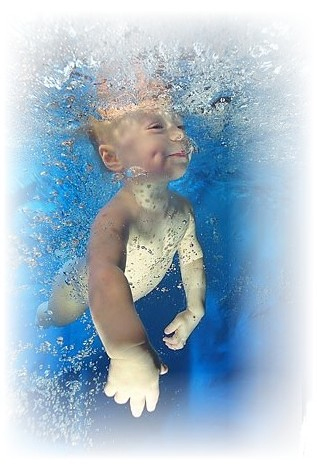
Unlike many sports, Swimming is an activity which can be learnt and enjoyed at almost any age. There are literally no barriers - not even ill health. Success has been achieved in the last twenty years with teaching babies and young children to swim.
MYTHS
People mislead themselves into thinking that a baby of six months who is taken to the pool and acquainted with it will remember what the child learns on returning to the pool at five or six years old.
FACT
These early stages should be seen as first taste but not a means of getting babies to swim long distances. It should be fun, the movements easy and relaxed with as little strain on breathing as possible.
All babies possess a certain amount of natural buoyancy and can make small propulsive movements. They, however, unfortunately cannot keep their heads above water - they simply lack the strength. Many can move short distances intuitively on their backs or on their stomachs, slightly under the water with faces in.
At a very young age, a baby picks up messages which are automatically transmitted by the parents when they are holding the baby; a parent who can swim and is confident is therefore less likely to transmit fear.

FACT SHEET -
Water Related Injuries
Babies & Swimming
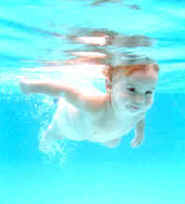
Sean 9 mths
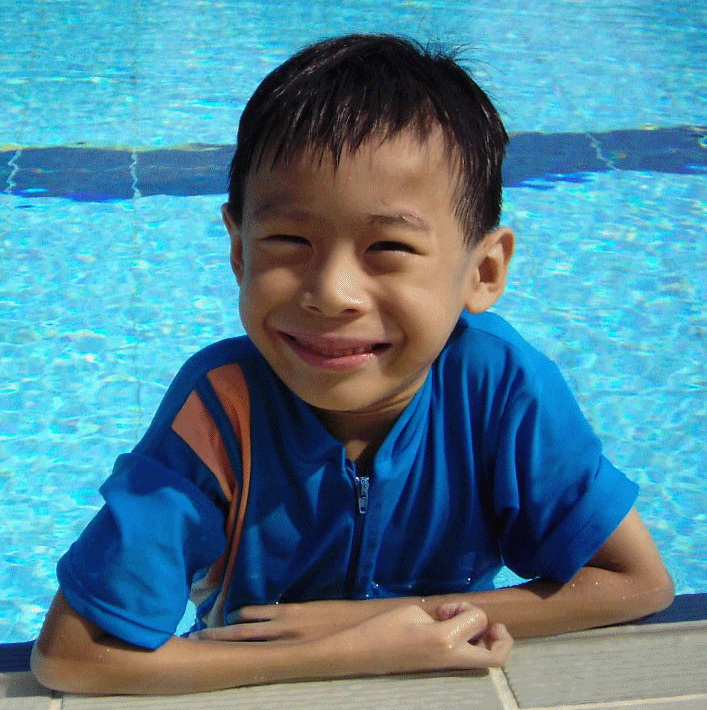
Kerwin 7 years old

Joshua 18 mths

Yuriko 15 mths
AT HOME
Start in the bath at home - the bathroom is a familiar surrounding for the baby and atmosphere is warm and comforting without the noise, shouting, splashing etc.
Fill the bath up to about three quarters full. Support your baby by holding them under the armpits from behind. This is best done with the parent lying or sitting on his back; the parent can then wrap his hands under the armpits so that the thumbs rest just above them in front of the shoulders.
The baby is then ready to be submerged or be submerged. The baby will often make automatic kicking movements so that the kness are bent and lower legs bicycled along the surface. Slight propulsion can result.
During the first nine months of life the baby will be able to adapt naturally to the breathing, but do not extend your baby with regard to breathing, either in the bath or in the pool. Toys can be a useful attraction in the bath, particularly if the same toys are transferred to the learner pool later on.
Unfortunately it is difficult to get the baby used to swimming on his front in the bath.
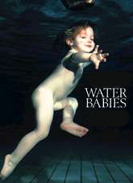

Charmaine 10 mths
AT THE POOL
These early breathing, kicking and hand splashing movements should now be transferred to the pool. It is important that you go into the water with your baby. Lightly bop him under and then lift him again.
When is accomplished, the up-and-down feel throught the water should be alter to a horizontal propulsion throught the water.
After nine months, you may find your baby lay curled but rigid on his back without moving. Do not worry about this - it is normal. Persist in a gentle manner until kicking recommences.
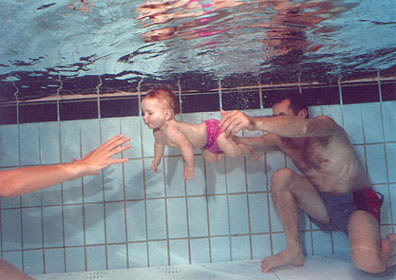
POINTERS TO BEAR IN MIND
- Make sure both the pool and swimming pool air temperature are warm enough.
- Take your baby out if he becomes unhappy for any length of time.
- Do not stretch your baby to the limits of the efforts he can make. Remember you are only preparing for the future.
- Take your baby at least twice a week and not more. The period of swim should not be more than an hour.
- Try always talking to your baby throughtout and remember to encourage.
- Doctors recommend that young babies of less than six months should not be swimming in a public pool until they have had all the standard innoculations, but swimming in the bath tub can be help at this age.
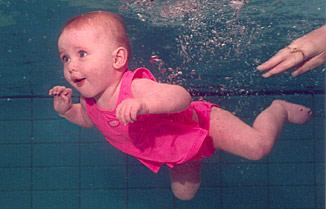
Emily 8 mths

Luke 10 mths
Copyright @ 1994 The Swim Coach All Rights Reserved